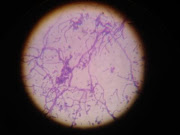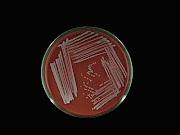JAC Antimicrob Resist https://doi.org/10.1093/jacamr/dlaf186
JAC-Antimicrobial Resistance
Antibiotic
resistance and β-lactam resistant genes among bacterial isolates from clinical,
river water and poultry samples from Kathmandu, Nepal
Upendra
Thapa Shrestha1, Manash Shrestha2, Nabaraj Shrestha3, Komal
Raj Rijal1 and Megha Raj Banjara1*
1Central Department of Microbiology, Institute of Science and
Technology, Tribhuvan University, Kirtipur, Kathmandu, Nepal;
2Asia Pacific Malaria Elimination Network (APMEN), Singapore;
3Central Veterinary Laboratory (CVL), Tripureshwor, Kathmandu,
Nepal
*Corresponding
author.
E-mail: megha.banjara@cdmi.tu.edu.np
Received
17 August 2025; accepted 25 September 2025
Objective: To assess the
antibiotic resistance and beta-lactam resistance genes among bacterial isolates
from clinical, river water and poultry samples.
Methods: Staphylococcus
aureus, Escherichia coli and Pseudomonas aeruginosa were isolated from clinical,
poultry and river water samples collected during 2020–22. They were subjected
to antimicrobial susceptibility tests following the CLSI guidelines. The
bacteria were screened for β-lactam resistance genes blaTEM, mcr-1,
mecA and blaNDM-1.
Results: Among 2835
clinical samples, E. coli was the most frequently isolated bacterium
(10.3%, 292), followed by S. aureus (6.0%, 169) and P. aeruginosa (4.0%,
143). Of the E. coli isolates, 64.4% exhibited multidrug resistance
(MDR) and 43.8% were extended-spectrum β-lactamase (ESBL) producers, with 44.5%
and 16.4% harbouring the blaTEM and mcr-1 genes, respectively.
Among S. aureus isolates, 80.9% of methicillin-resistant strains (MRSA)
carried the mecA gene, while 30.1% of metallo-β-lactamase
(MBL)-producing P. aeruginosa were positive for the blaNDM-1 gene.
In poultry samples, 30.4% of E. coli isolates harboured the blaTEM gene
among 128 ESBL producers, and the prevalence of colistin-resistant isolates
carrying mcr-1 was higher than in clinical samples. In contrast, the
occurrence of ESBL-producing E. coli and MRSA, along with their
associated resistance genes, was lower in water samples.
Conclusions: This study demonstrated widespread multidrug
resistance (MDR) and ESBL production among clinical, poultry and river water
bacterial isolates in the Kathmandu valley. Colistin-resistant E. coli carrying
the mcr-1 gene, methicillin-resistant S. aureus (MRSA) with mecA
and metallo-β-lactamase (MBL)-producing P. aeruginosa harboring blaNDM-1
were detected across sources. These findings emphasize an urgent One Health approach to curb the
growing threat of antimicrobial resistance in the region.
Citation: Thapa Shrestha U, Shrestha M, Shrestha N, Rijal KR, Banjara MR. Antibiotic resistance and β-lactam resistant genes among bacterial isolates from clinical, river water and poultry samples from Kathmandu, Nepal. JAC Antimicrob Resist. 2025 Oct 17;7(5):dlaf186. doi: 10.1093/jacamr/dlaf186. PMID: 41113068; PMCID: PMC12531798.
FULLTEXT: Download























2 comments:
SELLING FRESH SSN-NIN-SIN CVVS FULLZ DUMPS DATABASE
100% Working Top Quality
Always Check & Updated New & Fresh
Good Offers for Bulk Buyers
I'll Replace or Change Info If Found Invalid
Payment Via Crypto
USA – UK – CANADA – AUSTRALIA LEADS
GET BY (DOB| CITY| STATE| ZIP| GENDER)
DL PICS FRONT BACK WITH HOLDING SELFIE
FULL-Z WITH DL NUM
FULLZ FOR TAX RETURN & UI
W-2 FORMS
DEAD FULLZ IN BULK
HIGH CS PROS
FULLZ WITH EIN
FRESH MAILS WITH PASS
DUMPS TRACK PIN 101/102
EMPLOYEE LEADS
SWEEPSTAKES
CRYPTO LEADS
CASINO LEADS
PAYDAY LEADS
LOAN LEADS
MEDICAL & HEALTH PROFESSIONAL LEADS
MORTGAGE LEADS
EIN LOOK-UP
HOMEOWNER LEADS
BUSINESS & B2B LEADS
H@CKING & SP@MMING PACKAGE WITH COMPLETE TOOLS & TUTORIAL
For Order Contact :
TG : @fullzpros
TG CHANNEL : @Bigdatatrader
WA : (+1605)-846-1870....
Mail : silasclark99 (@) gmail.com
VK ID : @fullzpros
I was diagnosed with Hepatitis B four years ago. After two years on antivirals and regular monitoring, I still struggled with symptoms, low energy, and worry about my health. Last year I tried a herbal program from NaturePath Herbal Clinic. I was skeptical, but within a few months I personally felt less fatigue, better digestion, and more balanced overall. It was a meaningful experience for me. If you or someone you know is dealing with Hepatitis B, you may explore complementary options that feel right for you this is only my personal experience.
Website: www.naturepathherbalclinic.com
Email: info@naturepathherbalclinic.com
Post a Comment